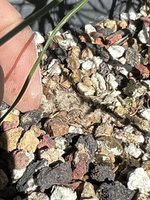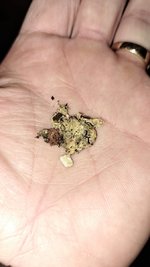Hi Ugo. Healthy looking soil! Don’t change a thing! If I don’t repot I always do the soji (clean the top soil). I use bent nose tweezers and, scraping radially away from the trunk, I remove the top 1/2” or so off the soil surface. I remove or adjust any small crossing or problematic roots and put on fresh soil. Then I re-moss. You’ll find that the water will penetrate much better.
S
Thank you sir!
Let say that this tree doesnt seems to complain at all!
I will do some major styling work on this tree this year, I found it in really poor condition but its now a strong tree.
I repotted the tree in March 22 and started to see a difference with water have more difficulty to enter the soil around August.
The only thing I started doing when I saw this was titlting the pot after proper watering so the water that entered the soil could drain "throught" the core of the root mass and attain the core under the trunk.
I will for sure use the soji technique you suggested thank you.
I also found on the forum a detailed post you've made in the past explaining the technique, thank you for that.
Sounds stupid but I dont have a pair of bent nose tweezers.....
I really have all kind of tweezers, regular with spatula, a sturdy pair to remove pine needles, one made to remove flower buds on azalea and a pair of masakuni tweezers with blades just to cut buds... never find the use of the bent nose
Ok Ill have to get a pair!!
Knowing this work will be done around buds swell I will have to use something else...
Quick question about top dressing.
In the situation I found the mychrorizea was "acting" as a very good protective layer, as you mentioned the first 1/8 inch of soil can look bone dry but the mycorrhizal fungi layer right under keep the soil mass well protected with a higher level of moisture underneath.
If I use top dressing and the mycorrhizal layer form back in a couple months right under the new layer of soil do you see a possible issue with excessive moisture retention using top dressing with the very possible reformation of a mycorrhiza layer?
Just to give more general info on the tree.
The tree is a dwarf alberta spruce that's usually in full sun all day for almost 12hrs except on very hot part of summer where its moved and gets partial/full shade from 11-2pm and back in full sun until night time. One thing that might be a detail that could have some importance as Im trying to understand how to repeat this process... the tree is in a mica pot.
Mica pot are brown and can become really hot if left out in full sun without a cooling period in the afternoon.
As a side note the fungi also affect the drainage holes that I had to clean two times now to make sure the pot has proper water drainage.
Thank you again for the informations
Ugo













